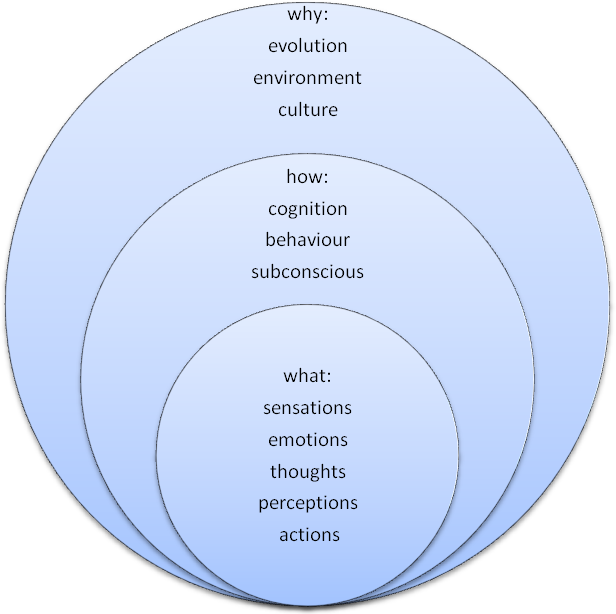2.1: Introduction
- Page ID
- 123513
Jennifer Walinga
Scientific areas of study are often guided by a paradigm (prevailing model). In astronomy, Ptolemy placed Earth at the centre of the universe and thereby shaped the way people conceived of all things related to that science. Later, the Copernican paradigm placed the Sun at the centre of the universe, which shifted perspectives and understandings. A paradigm presents a generally accepted approach to the whole field during a particular era. A paradigm equips scientists and practitioners with a set of assumptions about what is to be studied as well as a set of research methods for how those phenomena should be examined. In physics, the Aristotelian view of the composition of matter prevailed until Newton’s 17th-century mechanical model emerged and overtook it, which in turn was expanded by Einstein’s 20th-century relativity paradigm (Watson, 1967). With each shift in knowledge and insight, a form of revolution occurs (Kuhn, 1970).
However, psychology lacks a guiding or prevailing paradigm due to its youth and scope. Instead, the field of psychology has travelled the course of several movements, schools of thought, or perspectives, which provide frameworks for organizing data and connecting theories but no overall guidance or stance. In psychology, each new line of thinking emerges in response to another. New ideas or ways of thinking challenge prior thinking and require further research in order to resolve, clarify, or expand tensions between concepts. Often, new methodologies[1] emerge as well, and new questions demand new tools or approaches in order to be answered.
Major psychological perspectives discussed by researchers and practitioners today include biological, psychodynamic, behaviouristic, humanistic, cognitive, and evolutionary perspectives (Figure 2.1, “Major Psychological Perspectives Timeline”). It appears that a new perspective emerges every 20 to 30 years.

Figure 2.1 Major Psychological Perspectives Timeline [Long Description] (by J. Walinga)
This list of perspectives changes, of course, as the field of psychology grows and evolves, and as our conceptualization of psychology expands and develops. The first structuralist psychologists, such as Wilhelm Wundt and Edward B. Titchener of the late 1800s, thought of psychology in biological or physiological terms and focused on the elements of human experience and sensation — the “what” of human experience. But the wave of functionalist, behavioural, and cognitive psychologists to follow began to include the “how” of human experience. Influenced by Charles Darwin’s theories, William James and others later began to consider the “why” of human experience by focusing on interactions between mind and body, including perceptions and emotions, as well as the influence of environment on human experience (Figure 2.2, “The Elements of Psychology”).

Figure 2.2 The Elements of Psychology [Long Description] (by J. Walinga)
Reflecting on psychological developments today (e.g., positive psychology, multiple intelligences, systems thinking), we can foresee psychology moving toward an integrative approach that incorporates much of the prior learning that has come before it. Dr. Evan Thompson, a professor of philosophy at the University of British Columbia, who works in the fields of cognitive science, philosophy of mind, phenomenology, and cross-cultural philosophy, especially Asian philosophy and contemporary Buddhist philosophy in dialogue with Western philosophy and science, speaks and writes about an integrative psychology, which is psychology that combines the nature and actions of mind, body, and spirit (Varela, Rosch, & Thompson, 1992). Perhaps an integrative perspective will be the next developmental stage for the field of psychology and will move the field that much closer to its own established paradigm.
References
Freud, S. (1900). The interpretation of dreams. In J. Strachey (Ed. & Trans.), The standard edition of the complete works of Sigmund Freud (Vol. 4). London: Hogarth Press.
Kuhn, T. S. (1970). The structure of scientific revolutions (2nd ed.). Chicago: University of Chicago Press.
Maslow, A. H. (1954). Motivation and personality. New York: Harper.
Neisser, U. (1967). Cognitive Psychology. Englewood Cliffs, NJ: Prentice Hall.
Pavlov, I. P. (1927). Conditional reflexes (G. V. Anrep, Trans.). New York: Oxford University Press.
Rogers, C. R. (1942). Counseling and psychotherapy: Newer concepts in practice. Boston: Houghton Mifflin.
Varela, Francisco J., Rosch, Eleanor, & Thompson, Evan. (1992). The Embodied Mind: Cognitive Science and Human Experience. Cambridge, MA: MIT Press.
Watson, R. I. (1967). Psychology: A prescriptive science. American Psychologist, 22, 435–443.
Long Descriptions
There are three elements of psychology: Why? How? and What? “Why” deals with things like evolution, environment, and culture. “How” deals with things like cognition, behaviour, and subconscious. “What” deals with sensations, emotions, thoughts, perceptions, and actions.
Footnote
- Research study design principles.
Contributors and Attributions
- Introduction to Psychology by Jorden A. Cummings & Lee Sanders is licensed under a Creative Commons Attribution-NonCommercial-ShareAlike 4.0 International License, except where otherwise noted.
- Refer to Source Chapter Attributions for more details


